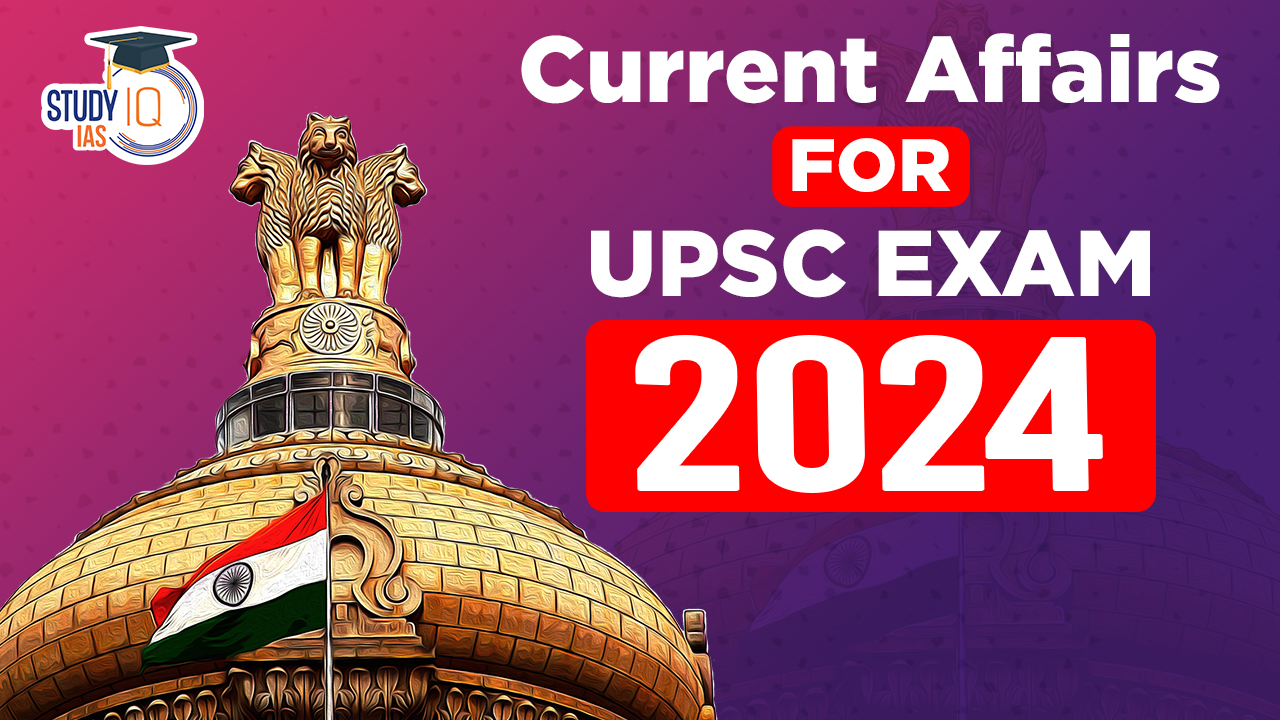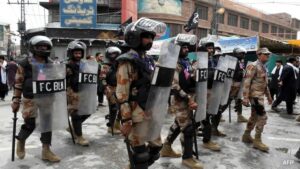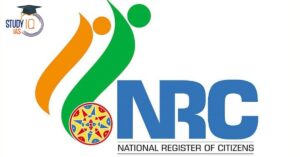Table of Contents
Mudra Loans
Context: The non-performing assets associated with Mudra loans given out by public sector banks have come down in the current financial year, Union Finance Minister Nirmala Sitharaman informed the Lok Sabha.
About PM Mudra Yojna
- Launched in 2015, for providing loans up to Rs. 10 lakh to the non-corporate, non-farm small/micro-enterprises.
- Funding Provision:
- MUDRA stands for Micro Units Development & Refinance Agency Ltd., is a financial institution set up by the Government.
- These loans are given by Commercial Banks, RRBs, Small Finance Banks, MFIs and NBFCs.
- MUDRA does not lend directly to micro-entrepreneurs/individuals.
- Three products are created under MUDRA, as per the stage of growth and funding needs of the beneficiary micro unit.
- Shishu: Covering loans up to Rs. 50,000.
- Kishore: Covering loans above Rs. 50,000 and up to Rs. 5 lakh.
- Tarun: Covering loans above Rs. 5 lakh and up to Rs. 10 lakh.
- Loans under the MUDRA scheme are collateral-free loans.
| UPSC PYQ |
| Q. Pradhan Mantri MUDRA Yojana is aimed at? (2016)
(a) bringing the small entrepreneurs into formal financial system (b) providing loans to poor farmers for cultivating particular crops (c) providing pensions to old and destitute persons (d) funding the voluntary organisations involved in the promotion of skill development and employment generation Ans: A |
The Issue Of Institutional Violence, Addressing It
Context: The majority of Indian females face gender-based violence.
Institutional Failures and Violence
- Lack of Political Prioritization: Women’s safety and gender-based violence are not central issues in electoral agendas despite high incidences of violence against women.
- Societal and Institutional Bias: There’s a prevalent belief within law enforcement that complaints of gender-based violence are generally baseless, affecting the treatment of survivors and the pursuit of justice.
- Example: A 2019 report by J-PAL noted that 39% of police officers believe complaints of gender-based violence are usually baseles.
- Inadequate Legal System Response: The judicial system is described as lengthy and traumatic, with a backlog of 40 million cases making timely justice virtually impossible, particularly for marginalised communities.
- Implementation of Laws: Despite robust laws against domestic violence, their implementation is weak due to poorly trained or indifferent officials.
- Intimidation and Discouragement by Police: Survivorsface discouragement from pursuing legal action by police officers, who sometimes redirect or dissuade them from filing complaints.
- Example: Ranjita, Founder of Samarthya, recounted the experience of a woman with bleeding veins being discouraged by the police from filing a complaint.
- Cultural and Structural Barriers: In rural areas, male and upper-caste dominated panchayats create significant obstacles for women seeking justice, and the social stigma around divorce and speaking out is profound.
| Facts |
|
Suggestions for Improvement
- Enhanced Police and Judicial Training: Advocating for training programs like those conducted by Vanangna, which focus on a trauma-informed, women-centric approach in handling cases of gender-based violence.
- Reform of Justice Institutions: There is a call for a national reimagination of justice systems to make them more trauma-informed and focused on healing, leveraging the experience and methods of organisations working on these issues.
- Stronger Implementation of Laws: There needs to be a concerted effort to enforce these laws effectively.
- Public Awareness and Data Collection: More data and stories need to be shared publicly to highlight the scale of the problem and the inadequacies in the response, which can drive public and political will for change.
- Digital and Legal Innovations: The recent updates to criminal law procedures focusing on timeliness and digital access are steps in the right direction, but they need to be accompanied by comprehensive gender-sensitive training and monitoring to ensure effectiveness.
Powering India’s Future-Clean Energy
Context: The Finance Minister announced policies in the recent Budget speech supporting India’s clean energy transition.
Key Milestones in India’s Energy Sector
- Saubhagya Scheme: Achieved near-universal electrification with about 97% of households electrified by 2020, as per the Council on Energy, Environment, and Water (CEEW).
- Renewable Energy Capacity: Witnessed a five-fold increase in installed renewable energy (RE) capacity, positioning India as the fourth-largest globally in RE capacity.
- Reduction in Discoms’ Losses: Achieved a 40% reduction in aggregate losses of power distribution companies (discoms), hitting a low of about 15% in 2022-23.
Challenges
- Rapid Growth in Electricity Demand: The annual electricity demand has been growing by 7-9% every year since the COVID-19 pandemic, with peak demand rising even faster.
- Climate Change-Induced Weather Extremes: Leads to unplanned power surges and frequent power outages.
- Balancing Renewable Integration and Power Supply: Despite efforts to add renewable capacity, renewables only account for 13% of India’s power generation mix, which challenges the transition to a cleaner energy system.
- Dependence on Coal: There’s a substantial dependence on coal.
- Example:In FY24, over 210 GW of coal capacity generated about 80% of power during non-solar hours.
- However, 40 GW of this capacity was unavailable nearly 60% of the time due to maintenance or faults, necessitating revised norms for timely upkeep.
- Example:In FY24, over 210 GW of coal capacity generated about 80% of power during non-solar hours.
| Facts |
|
Government Initiatives
- Carbon Emission Reduction Goals: Reduce India’s total projected carbon emissions by 1 billion tonnes by 2030.
- Decrease the carbon intensity of the nation’s economy by less than 45% by the end of the decade.
- Achieve net-zero carbon emissions by 2070.
- Solar Initiatives: Approve one solar city per state.
- Approve the establishment of 57 solar parks with a total capacity of 39.28 GW across the nation.
- Promote Floating PV Projects.
- National Green Hydrogen Mission: Union Cabinet approved the National Green Hydrogen Mission with an initial outlay of INR 19,744 crore.
- Breakdown of funds:
- INR 17,490 crore for the SIGHT programme.
- INR 1,466 crore for pilot projects.
- INR 400 crore for R&D.
- INR 388 crore for other mission components.
- Breakdown of funds:
- Off-shore Wind Energy: Medium and long-term targets for off-shore wind power capacity additions:
- 5 GW by 2022.
- 30 GW by 2030.
- Wind-Solar Hybrid Policy(2018):
- Promote extensive grid-connected wind-solar PV hybrid systems.
- Efficiently utilise transmission infrastructure and land.
- Address the intermittency challenge by combining solar and wind for better grid stability.
- Flexibility in the share of wind and solar components in hybrid projects, with one resource’s capacity being at least 25% of the rated power capacity of the other.
- PLI Scheme and Customs Duty: Introduced PLI scheme in Solar PV manufacturing with financial outlays of INR 24,000 crore under Atma Nirbhar Bharat.
- Imposed Basic Customs Duty of 25% on Solar Cells and 40% on Solar PV Modules effective from 01.04.2022.
Way Forward for Enhancing Energy Security
- Enhanced Targets for Renewable Energy: Prioritise scaling up renewable sources and storage solutions to support peak demand efficiently.
- Accelerated Deployment of Clean Energy Resources: Focus on enhancing grid connectivity, securing conflict-free land, and diversifying beyond solar to other clean technologies.
- Improving Energy Availability and Market Dynamics: Suggest innovation in bid designs to attract RE developers to the power exchange and establish capacities for long-term contracts.
- Advancement through Digitalisation: More than 11 million smart metres installed, with significant progress in Bihar and Assam.
- Aiming for a target of 250 million, emphasising the benefits of reduced losses and efficient consumer services while maintaining cybersecurity.
Justify inclusion of 77 Castes in OBC list: SC to Bengal Govt.
Context: The Supreme Court asked the West Bengal government to justify including 77 castes, largely Muslim communities, in the State’s Other Backward Classes (OBC) List.
More In News
- The order follows an appeal by the State government against a judgement of the Calcutta High Court striking down the inclusion of several of these castes in the OBC list.
- The SC asked to clarify the nature and scope of the survey undertaken to identify the social and educational backwardness of these communities, and their inadequacy of representation in the State public services, which warranted their inclusion in the OBC list.
Process of Inclusion of Communities in Central OBC List
- Role of NCBC: The National Commission for Backward Classes (NCBC) examines requests for the inclusion of castes in the Central OBC list.
- The NCBC forms a Bench to review the proposals and makes a decision on the inclusion.
- The NCBC forwards its decision to the Union government.
- Cabinet Approval: The Cabinet approves the additions and drafts the necessary legislation.
- Presidential Notification: After Cabinet approval and legislation, the President notifies the change.
| Articles and Amendments |
|
| Commissions Constituted For OBCs |
|
L-G Can Nominate 10 Aldermen To Delhi Corporation, Rules SC
Context: The Supreme Court ruled that the Lieutenant-Governor (L-G) has the power to nominate 10 expert persons to the Municipal Corporation of Delhi (MCD).
More in News
- The nominated person must have special knowledge of municipal administration.
- The 1993 amendment in Delhi Municipal Corporation Act, 1957 {Section 3(3)(b)(1)} vested the power to nominate 10 expert persons.
- It is a statutory duty of L-G and he is not bound by the aid and advice of the Council of Ministers.
- For the past 30 years, the LG has typically nominated aldermen based on the aid and advice of the Delhi government.
- This recent instance is the first since the enactment of Article 239AA in 1991 where the LG bypassed the elected government for MCD nominations.
| Facts |
|
| Amendments And Articles |
69th Amendment Act, 1992:
|


 Operation Baam: Baloch Separatist Group ...
Operation Baam: Baloch Separatist Group ...
 National Register of Indian Citizens (NR...
National Register of Indian Citizens (NR...
 World Population Day 2025, Themes, Histo...
World Population Day 2025, Themes, Histo...





















